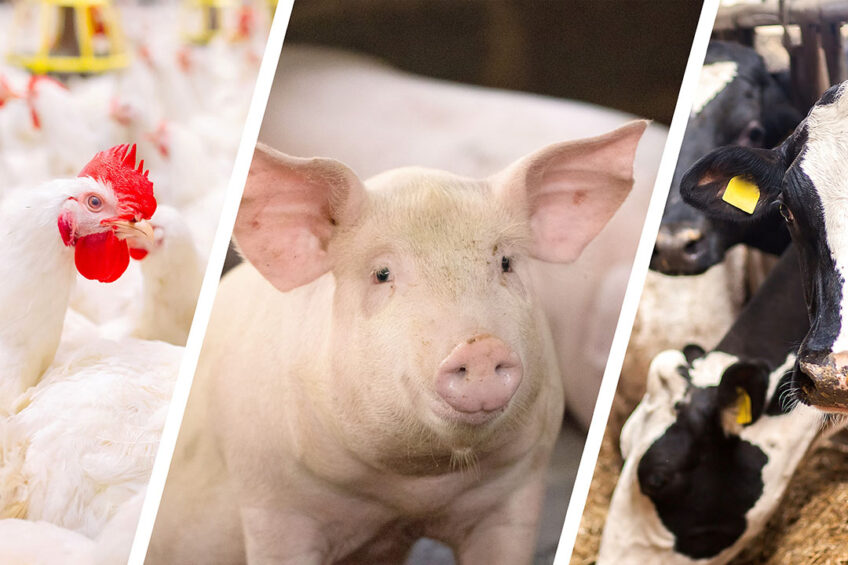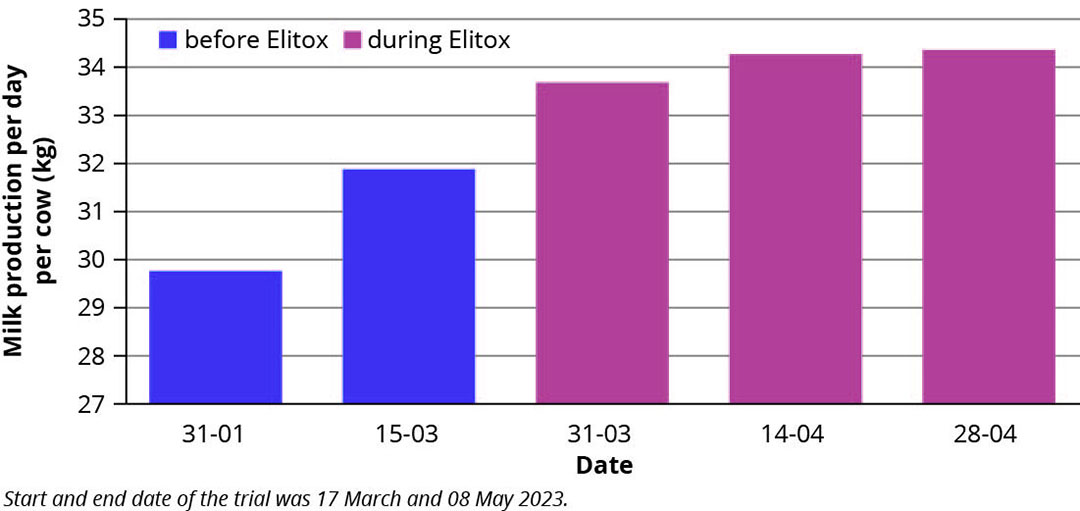Mycotoxins: A broad-spectrum challenge

According to literature, the concept of broad-spectrum is defined as being effective against a large variety or a wide range. Depending on the application, this term can be used in the context of antibiotics, insecticides or antiviral drugs, however this article will explore the meaning in the context of anti-mycotoxin additives.
MYCOTOXIN SPECIAL 2023 – read all articles
Firstly, mycotoxins are metabolites produced by a wide range of moulds. The most common ones are produced by Fusarium, Aspergillus and Penicillium species. Mycotoxin production occurs when moulds are faced with environmental stressors, such as humidity, temperature and pH. Therefore, mycotoxin production is highly correlated with weather events or climate change. Afterwards, these mycotoxins contaminate crops and thus the compound feed, resulting in a lower nutritional value of the feed. When consumed by animals or humans, they cause harm leading to specific symptoms, diseases and even mortality. So far, more than 400 different mycotoxins have been identified in both cereal, grain and feed samples. To make matters worse, mycotoxins conjugate with carbohydrates and proteins, which increases their complexity and therefore decreases their detectability in routine in vitro analysis. All in all, it is not easy to have a broad-spectrum-action additive against mycotoxins due to the variety, abundance, and conjugation of the latter.
Currently, many feed additive producers are proposing agents that have specific interactions with mycotoxins, either by binding or altering the chemical properties of the mycotoxins. Truth is that chemical interactions are substrate-dependent and therefore, the effectiveness varies from one mycotoxin to the other. And consequently, makes them not broad-spectrum. Thus, to elaborate further on the broad-spectrum action of the additives, the in vivo effect of the mycotoxins should be investigated.
How do mycotoxins affect animal health?
As mycotoxins are chemically stable, they survive heat treatments in feed production and reach the intestine unchanged. Under enteric conditions, mycotoxins attack the intestinal epithelium, which has a dual function. It is the animal’s first line of defence against pathogens, as well as a barrier to keep harmful substances away from internal organs.
Many mycotoxins consist of oxygen-containing structures, like ketones, alcohol and epoxide functional groups, which makes them very reactive towards epithelial cells and organs. This damage lowers the strength of the gut barrier, destroys the tight junction proteins and results in leaky guts. This effect on the gut wall will result in an unnecessary immune response in the animal. Furthermore, it allows translocation of mycotoxins and other detrimental molecules and bacteria to the bloodstream and internal organs. This effect can remain subclinical, but it can also severely affect zootechnical parameters. Providing that the animal is in good condition, the liver can solve this challenge by detoxification which leads to transformation and excretion of the toxins. However, if the liver fails, all other organs and the immune system will become compromised and that will unavoidably lead to weak animals, performance losses and eventually mortality. In any case, a mycotoxin challenge is an extra hurdle for farm animals that is better prevented than dealt with by the animal.
All mycotoxins have the same common enteric pathway:
- first, they pass the gut barrier,
- secondly induce changes in immunity and
- finally intoxicate the liver and the target organs.
Hence, a broad-spectrum additive could neutralise the toxic effects of a wide range of mycotoxins by supporting the animal’s defence mechanisms.
Strength of natural ingredients
Many natural compounds possess excellent characteristics to strengthen the gut barrier of farm animals. Important for mycotoxin control are antioxidants, anti-inflammatory and tissue-repairing agents. Additionally, hepatoprotective molecules as well as immunostimulants lead to both a healthier liver and a better immune system. Elitox contains a synergistic blend of natural ingredients containing all of the above-mentioned effects, hence becoming an effective broad-spectrum mycotoxin additive in multiple animal species.
Poultry are more susceptible to T2 toxin, aflatoxins, fumonisins and ochratoxins. Specific symptoms associated with these toxins are inflammation, liver problems, kidney failure, gut lesions. In numerous contamination trials, Elitox was able to prevent these problems and safeguard layer’s egg laying rate, breeder’s egg hatchability and broiler performance.
Swine are more susceptible to deoxynivalenol (DON), zearalenone (ZEA) and fumonisins. Many reproductive problems in sows and intestinal lesions in piglets were reported. Natural solutions have been shown to alleviate DON and ZEA-related problems due to their immune-supporting and gut-health-promoting role.
Similarly, cattle are even exposed to a much broader range of mycotoxins as they consume silage next to compound feed. Examples are ergot alkaloids, which are often found in contaminated ryegrass. Although they are stronger and more robust animals, problems with both production and milk quality have been related to mycotoxins. Again, the natural ingredients as described above are effective tools to solve such problems.
Figure 1 – Average milk production per cow on the recorded days before and during Elitox supplementation in the TMR.

In a recent dairy cow trial (Figure 1), Elitox was administered daily in the TMR for approximately 50 days. During this period, individual milk samples were collected every 2 weeks from the milking robots. Records of different milk parameters were compared with historical data of the 100-cow herd. Consumption of 20 gram/cow/day of the additive improved the average milk yield per cow by 2.3 litres, decreased the urea level of the milk by 3.8 mg/100 g and improved the net gain of the farm after 3 weeks of supplementation.
Prepare animals to fight mycotoxin challenges
In conclusion, the need for broad-spectrum solutions is higher than ever as extreme weather events make mycotoxin loads more unpredictable and dangerous for animals. Nature harbours components that have a unique set of characteristics that complement the mode of action of ordinary binders. These natural components possess extraordinary properties that support animal health. By strengthening the gut barrier function and controlling the immune system, the animal is better prepared to fight mycotoxin challenges. As all toxins need to pass the epithelial layer, this approach is by definition broad-spectrum. This mode of action goes beyond mycotoxin elimination and contributes towards overall animal health and performance.
Visit Impextraco.com for more information on Elitox.
Join 13,000+ subscribers
Subscribe to our newsletter to stay updated about all the need-to-know content in the dairy sector, two times a week.






